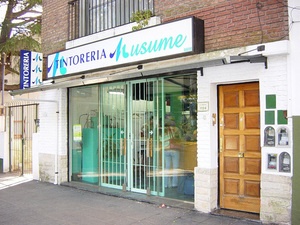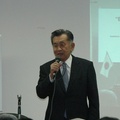For five decades, the job of dyer in our country was almost exclusive to the Japanese community. The pioneers were the Spanish, but the Japanese quickly took advantage of them, with industriousness and care, details that led to the level of distinctive character.
They prevailed to such an extent that it ended up being the same thing to say "I'm going to the dry cleaners" and "I'm going to the Japanese place." It was like this until around the 60's.
At that time (in the 60s), there were 2,000 dry cleaners operated by Japanese citizens in the city of Buenos Aires (the largest number in Latin America) and almost 3,000 distributed between the suburbs and the main towns in the interior. Then the decline began.
There are currently about 400 dry cleaners managed by Japanese or their descendants in the City of Buenos Aires and the total in the rest of the country does not reach a thousand.
origins
Since the end of the 21st century, the presence of Japanese in Argentina can be noted. After the arrival of the first official immigrant to Argentina in 1886, others began to arrive in large numbers.
In 1890, the first imports of Japanese products via Europe were established.
In the heart of the city there are famous Japanese bazaars and stores.
Among the most important houses, among others, that of the importer “Takinami” stands out.
The first large Japanese contingent arrived shortly at the beginning of the 20th century, from the island of Okinawa, devastated by the greatest poverty of the archipelago.
Most of them were flower growers and horticulturists, after having earned a living as employees, working as porters or cafe waiters.
Among the small independent commercial ventures that marked the employment trend of a large part of the Japanese community in urban areas for decades, dry cleaners stand out.
In the background of these businesses is the successful initiative of an Okinawan woman who in 1914 began knocking on doors to offer "washing and ironing clothes", using a precarious Spanish compensated with gestures.
The first dry cleaners were called “Washing and Ironing Workshop”… and they received shirts, handkerchiefs, underwear, socks and sheets… and everything was done by hand: with a simple soap and brush.
In its origins, the establishments did not have machinery and everything was done by hand, which lasted hours... ending late at night. (The Hoffman machines only entered in 1920). And in the 1930s, greater mechanization occurred with plates and dry machines.
Thus, the first dyers told other immigrants that they could work (and live) with this trade, since they did not need to know much of the Spanish language. You just need to learn the days of the week and the price. The rest remains in one: wash and iron.
To take into account the dimension of growth and progress, according to research by the Argentine Ministry of Foreign Affairs, in 1920 there were 22 people in charge of a dry cleaning business. In 1928: 234. In 1936: 812 … becoming the second profession of the Japanese after agriculture.
A typical place was the dry-cleaning house run by the whole family, with its traditional features, common to almost all of them: simple space - behind the counter, a half-inscrutable background or a modest and single room -, clothes hanging or just piled up in a corner, with a piece of identification paper, a characteristic smell of steam and solvents, the brief dialogue, which could conclude with a smile and a ceremonious and cordial greeting.
According to data from 1935, 81 of the 183 dry cleaners were called “Japanese” or “Japanese” and another 17 were called “Tokyo”. Thus, we can name other typical names such as: “Kyoto”, “Nippon”, “Japan”, “Fuji” and common surnames, such as “Higa” and “Arakaki”.
Based on the growth in the number of stores and the good service from the Japanese, it has since been associated in Argentina with the image of the Japanese community.
Today, the “Japanese dyer” still exists in the imagination of Argentine society.
Nowadays, the passage of time and generations produced changes in Japanese dry cleaners. They renewed their façade and presentation, maintaining the main essence: good service and quality as always through modern and neat reception desks. And there are new signs like: “Garment embellishment salon.”
Although in recent years so-called “ecological” dry cleaners have appeared with all their marketing and design, the differential service of Japanese dry cleaners is reflected in the artisanal work added to washing and ironing, that is: checking the garment to determine the type. cleaning, dry or wet, or if necessary pre-staining; In addition to including removal of buttons, appliqués, shoulder pads, and review of seams. Even the dry cleaner's “wise advice” to people about what is best for them.
© 2009 Ricardo G. Hokama












